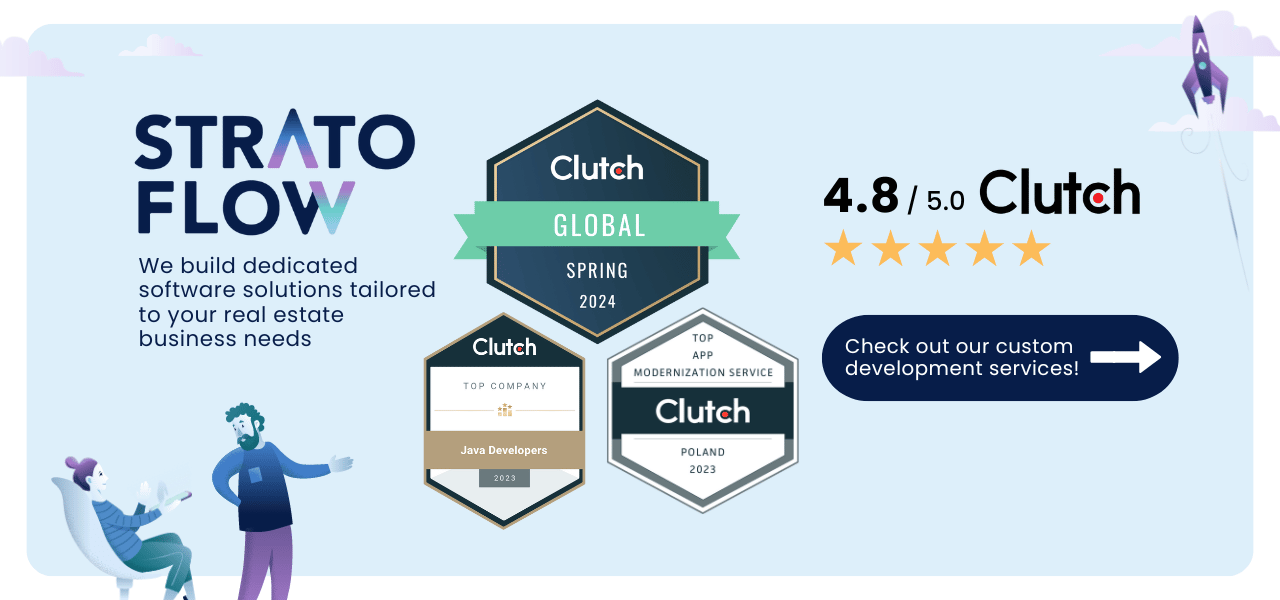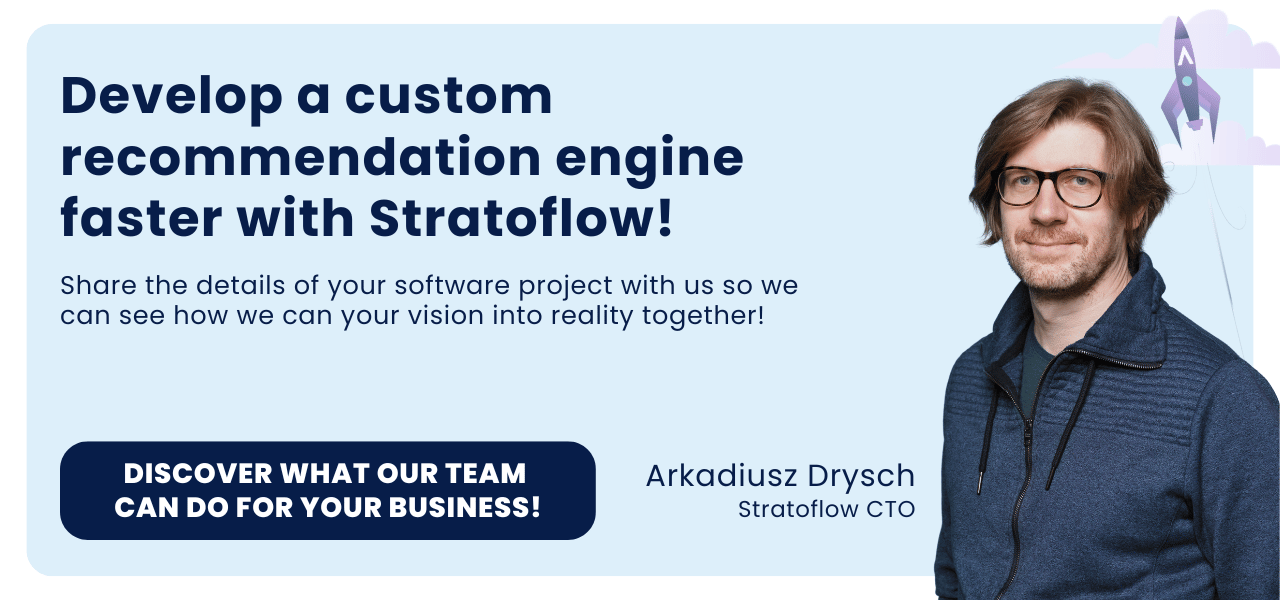An In-Depth Guide to Machine Learning Recommendation Engines
Recognize these prompts: “Recommended for you”, “Others also viewed”, “You may also like…”? If so, chances are that you use recommendation systems every day. Or, to be more accurate, they serve you, even if you’re not aware.
Contents
- What is the process behind recommender systems?
- Stages of creating a recommendation and how to improve them
- Recommendation Engine Development Services: Work With Experts
- Recommendation system and machine learning algorithms
- The use of data in recommendation systems
- Collaborative vs content-based recommender systems – which model is the best?
- Recommender systems and UX
- Implementing and measuring recommendation systems
- 9 types of recommendation models + real examples from our implementations
- How can your business benefit from recommender systems?
- Key statistics on recommendation engine market in 2024
Recommender systems are an inseparable part of any medium-sized or big e-commerce website. The system’s role is to suggest relevant new content to help users find exactly what they seek. A good recommendation boosts sales, AOV and conversion rates, because it generates automatic content advice based on user’s preference.
But how?
This thorough guide will help you navigate through the complex mechanics of recommender systems. Here’s why they are able to figure out what the customer “may also like”.
What is the process behind recommender systems?
In order to make an informed suggestion, a recommendation engine has to understand as much as possible about the user’s needs.
How does the recommendation engine work?
It analyzes website traffic and content to identify the most popular or relevant products for visitors. But, to dig a little deeper into what a particular user wants, it requires behavioral and statistical data.
Consider this: if a customer has recently purchased, say, a Canon camera, they are probably not interested in buying accessories for Nikon or Panasonic, regardless of how popular these products are among similar users.
Based on the user’s past sessions and preferences, an advanced recommender system might offer a Canon battery & case bundle – products that the buyer actually needs right now. Plus, upon returning to the store, the Recommended tab will be lining up Canon-compatible lenses.
How to make a recommendation engine this effective?
Stages of creating a recommendation and how to improve them
The first step is called candidate generation. Depending on the query given, the system generates a set of the most relevant candidate items to potentially suggest to the user.
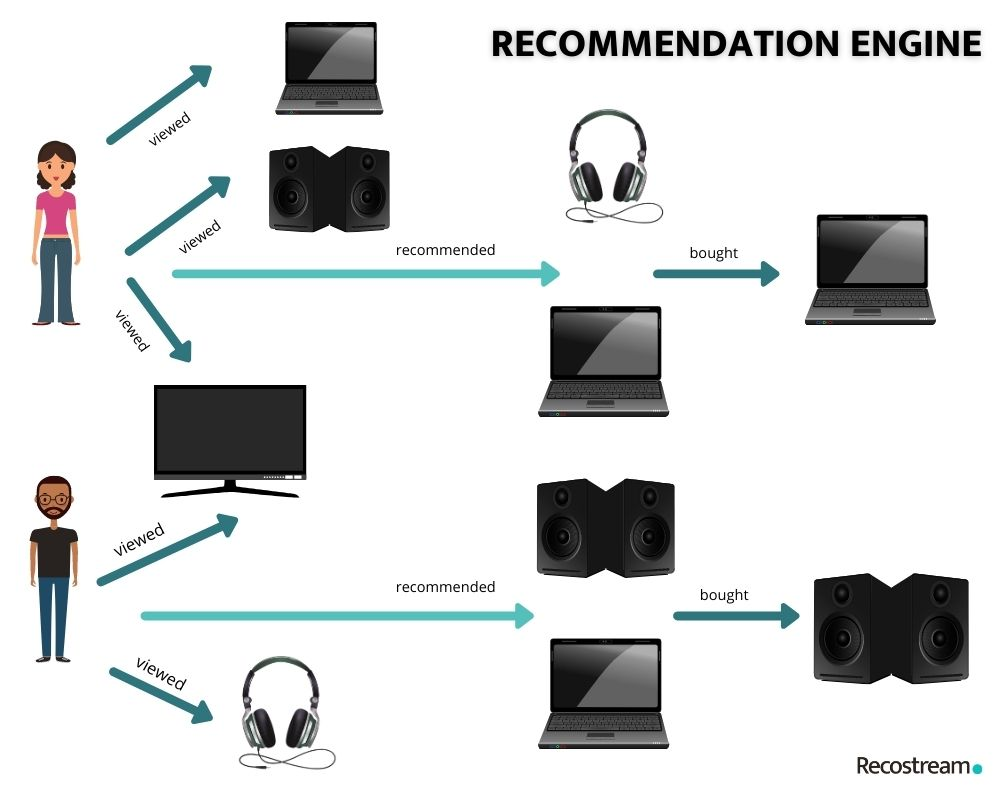
The next stage is narrowing down the data by ranking the candidates. Optimizing the process as shown in the above image is what makes a recommendation successful
This is a task for artificial intelligence. The most precise recommendation systems utilize self-learning models that register, analyze and interpret everything there is to know about user preferences.
Machine learning algorithms pave the way for personalized recommendations.
Recommendation Engine Development Services: Work With Experts
Developing a custom recommendation engine is an arduous task due to the dual challenge of delivering highly accurate recommendations while generating them within milliseconds.
Achieving this requires development of high-performance software architecture that can process vast amounts of data in real time, incorporating factors like user preferences, behavior, and contextual information.
Given these technical demands, it is advantageous to collaborate with a custom development company experienced in crafting such systems. Companies like Stratoflow.
Our expertise at Stratoflow in developing high-performance recommendation engines is exemplified by our creation of Recostream.
We designed this AI-powered recommendation engine to enhance the sales capabilities of e-commerce stores significantly.
By implementing advanced machine learning algorithms, Recostream was able to analyze vast amounts of data swiftly and provide highly personalized product recommendations in real-time. This not only improved customer engagement but also led to higher sales figures.
The engine’s ability to deliver recommendations in an impressive 20-30 milliseconds has a profound impact on user engagement and conversion rates.
According to our clients, they saw 5-10% increase in sales than’s solely due to the introduction of our custom recommendation engine.
Do you want to see similar results in your company?
At Stratoflow, we excel in building custom AI-driven recommendation engines tailored to your specific needs.
ur solutions leverage advanced machine learning algorithms to deliver highly personalized product recommendations, enhancing user engagement and driving conversion rates.
Stratoflow developers can help you develop and integrate personalized recommendations for a wide variety of business types, like:
- Healthcare: Craft personalized treatment plans and diagnostic recommendations to enhance patient outcomes by analyzing medical history and lifestyle data.
- Travel: Design personalized itineraries, suggest travel destinations, and provide dynamic pricing deals to improve the travel planning experience and customer satisfaction.
- Insurance: Deliver personalized financial advice, risk assessments, and policy recommendations by analyzing individual data and behavior.
- E-commerce and Retail: Enhance sales, customer satisfaction, and user engagement by offering personalized product recommendations based on browsing history and purchase behavior.
- Education: Develop customized learning paths for students on online education platforms by recommending courses, resources, and activities tailored to individual progress and interests.
- Media and Entertainment: Enhance user experience and retention on streaming services and news platforms by suggesting movies, shows, music, or articles to users.
- Real Estate: Improve the home buying or renting experience by recommending properties and providing market analysis tailored to individual preferences and needs.
By integrating our powerful and scalable recommendation engines, your business can achieve significant sales boosts and foster customer loyalty.
So how collaboration with us look like?
At Stratoflow, we deliver top-quality software products through a process that emphasizes close collaboration, innovation, and agility.
We start with a planning visit to understand project details, followed by collaborative estimation and prioritization.
Utilizing short development cycles and iterative approaches, we ensure seamless communication and regular feedback.
This method allows us to adapt to changes quickly and deliver comprehensive solutions, including analysis, design, development, testing, deployment, and maintenance, ensuring high performance and scalability for our clients’ needs.
Our expertise in developing custom recommendation systems for variety of industries ensures that your systems are seamlessly integrated, secure, and tailored to meet your evolving needs.
Contact us today to elevate your customer experience and drive growth!
Recommendation system machine learning algorithms
Machine learning, a subset of artificial intelligence, is a process through which a system explores patterns and connections occurring in vast historical data volumes (e.g. through association rules). This way it can delve deep into complex matters, such as human behavior, and understand them better.
To produce personalized content, recommendation systems must be trained by algorithms. Let us picture this by comparing the machine to a human.
A creative writing student receives from a tutor instructions on how to self-educate. They are specific guidelines that the teacher arrived at through trial and error. Such instructions can be compared to machine learning algorithms; the teacher is the creator of the algorithm; the student is a recommendation system.
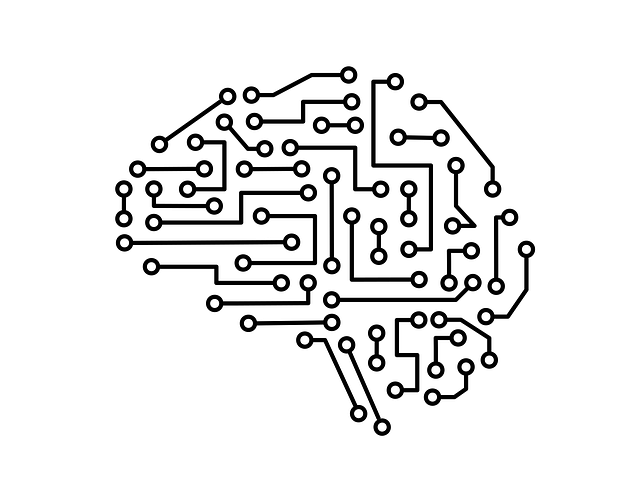
In order for the student to quickly learn at home and, consequently, produce high-quality and engaging texts, the teacher’s self-learning instructions must be extremely precise and effective.
Similarly, if we want our systems to generate recommendations that boost user engagement, the recommendation algorithms have to be efficient.
Unlike the complicated deep learning models using deep neural networks, traditional machine learning models allow systems to learn without being explicitly programmed.
Recommendation system machine learning does not require a neural network (or deep learning advancements like natural language processing or computer vision) to make accurate product recommendation technology for a user.
The use of data in recommendation systems
Machine learning techniques are rooted in collecting data in database which is often based on multi-tenant architecture. Then it analyzes content-based or user behavior-based data. The system next classifies this information and adapts to it to draw highly accurate conclusions and make predictions.
The question is, how to identify visitors?
Simple answer: cookies. These small text files contain unique series of characters that play a pivotal role in recognizing users. Suggestions of recommended items are often solely based on the system script’s ability to collect data on user’s behavior. But, to assign this information to someone, we need cookies.

Despite the general public’s concern about personal data security, cookies do not store anyone’s name, surname, credit card info or such. There is no hidden layer of vulnerable information – only a code that identifies the given visitor.
Thanks to the cookie-based recommendation engine, a system can match users with their sessions and, consequently, recreate customer journeys. Unfortunately, not all visitors will accept the cookie policy.
What happens when there are no cookies?
Even if a user doesn’t agree to sharing cookie data, product recommendations can still appear. However, they will not be as accurate as they potentially could.
In case the user is unwilling to accept the policy, there is always data from other users with similar taste to fall back on. A recommendation system backed by machine learning can detect user similarity based on advanced AI data science.
There is also the cold start problem, which is when a new user visits a website for the first time and there is no historical data – what should the system recommend then?
A strategy requiring only item data would be to show whatever’s the most popular among many users. This solution to the cold start problem is the simplest, but not the most effective.
A much more successful method is used by Recostream: the system’s crawler analyzes all products on the website and recommends the ones deemed most relevant based on categorical data.
Collaborative vs content-based recommender systems – which model is the best?
Recommenders come in different models. The most popular ones are content-based filtering (CBF) and collaborative filtering (CF). They can also be combined into one hybrid approach.
Content-based filtering
This rather simple technique requires detailed information about items on the website. Recommendations made by content-based systems are simply things similar to what the user has already shown interest in.
For example, if a user reads texts from digital libraries, the content-based recommenders need nothing more than knowledge of titles, authors, publication dates, etc., to recommend the same genre or writer to the reader.
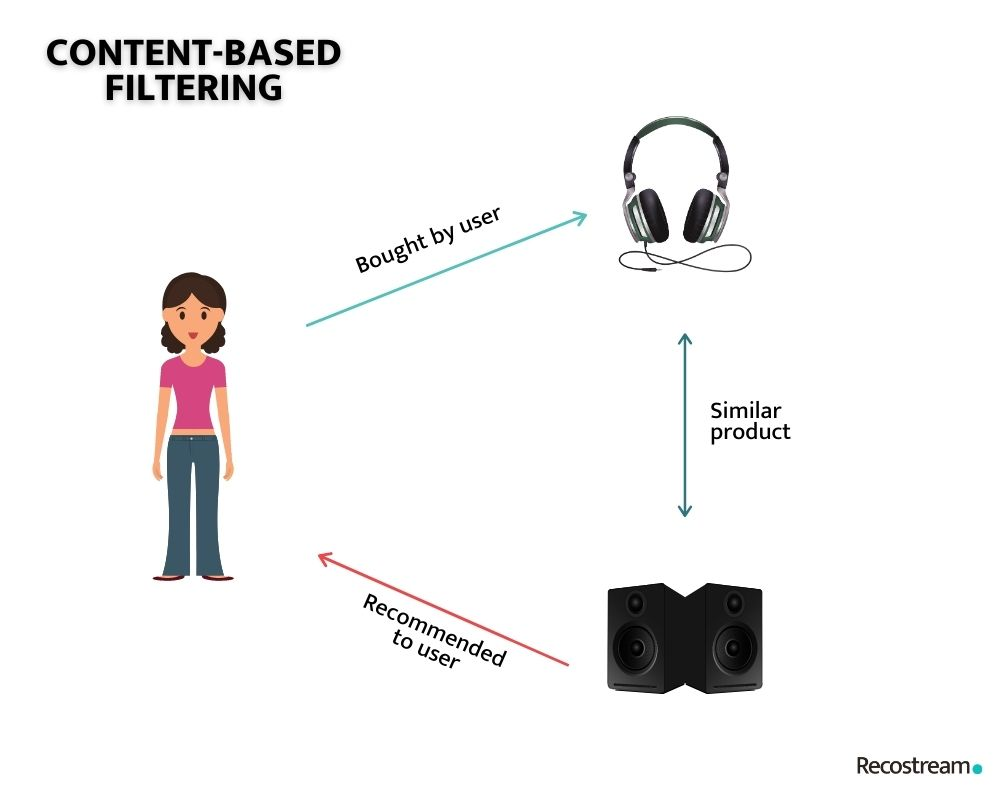
Collaborative filtering
It predicts the user’s needs based on how similar users collectively respond to items. This is done through the analysis of interactions between different users and items.
For instance, in memory-based collaborative filtering, the system finds a group of customers with whom the current visitor has similar interests and transaction history. This user will receive recommendations of products most popular among the said group.
Collaborative filtering methods are the dominant framework for recommendation system machine learning. This model is supported by what is called a user-item matrix; it’s a complex structure of categorical variables encoding individual user preferences for particular items.
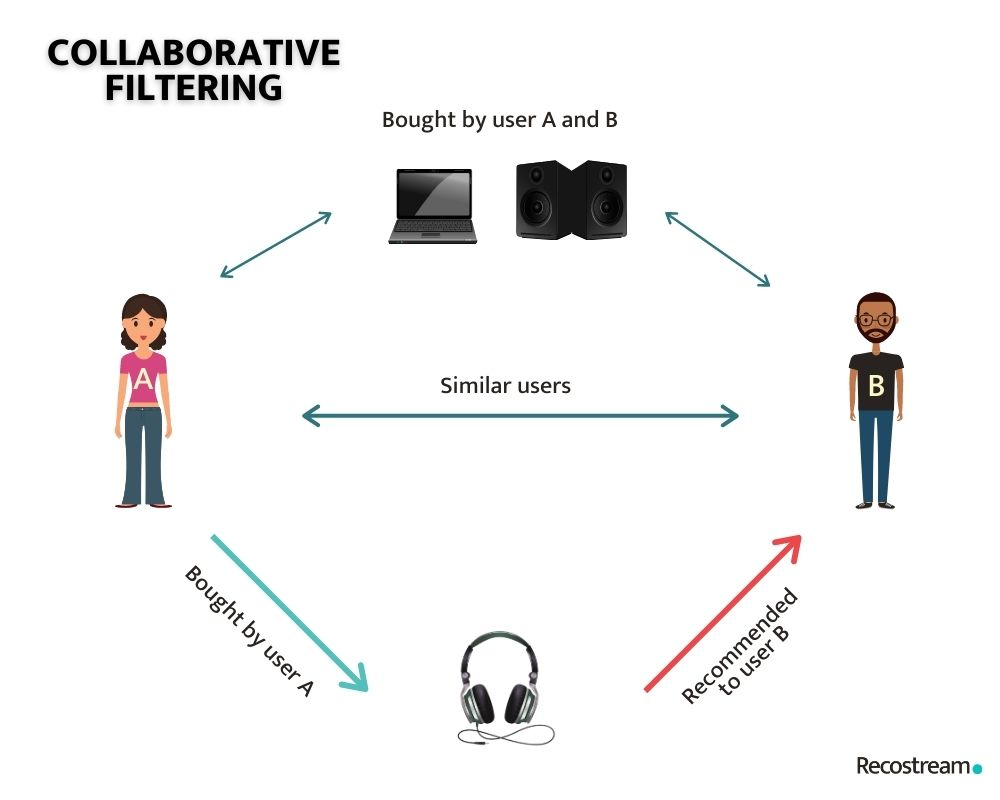
Hence, the collaborative filtering-based approach necessitates collecting data on user ratings, behavior and more – not only from the single active customer, but also many others. Collaborative filtering works without specific item details, though.
The hybrid model
This seems to be the optimal approach to candidate generation. It mixes the encyclopedic knowledge of content-based filtering with the flexibility of collaborative filtering. While the first technique offers the user rather familiar items, the second one explores new areas of interest.
And who knows which method might be the most effective in a given situation?
Are you looking for a custom personalization engine?
Check out how we can introduce AI-driven recommendations to your business!
Recommender systems and UX
The engine impacts the accuracy of a recommender system. Another crucial part of product recommendations for online shopping is website UX, which, if designed well, improves the overall effectiveness.
After all, what good is the most suitable offer if it doesn’t catch anyone’s eye?
3 steps to setting up recommendation-friendly website UX
Firstly, make the recommendation easily accessible. If it’s hard to find, it’s not visible enough. But don’t overdo it! The Recommended items tab should not get in the way of user activity. The primary content of the subpage should remain the central focus of the design.
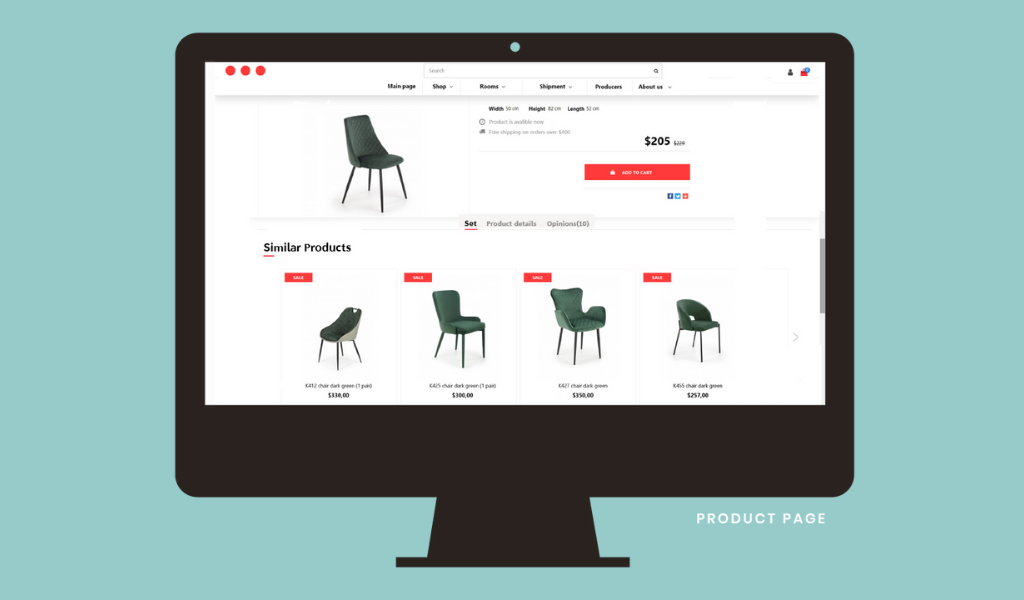
The second tip is as obvious as it is important: recommendations must be visually appealing. An ugly ad disturbs the website’s aesthetic, which makes it less attractive.
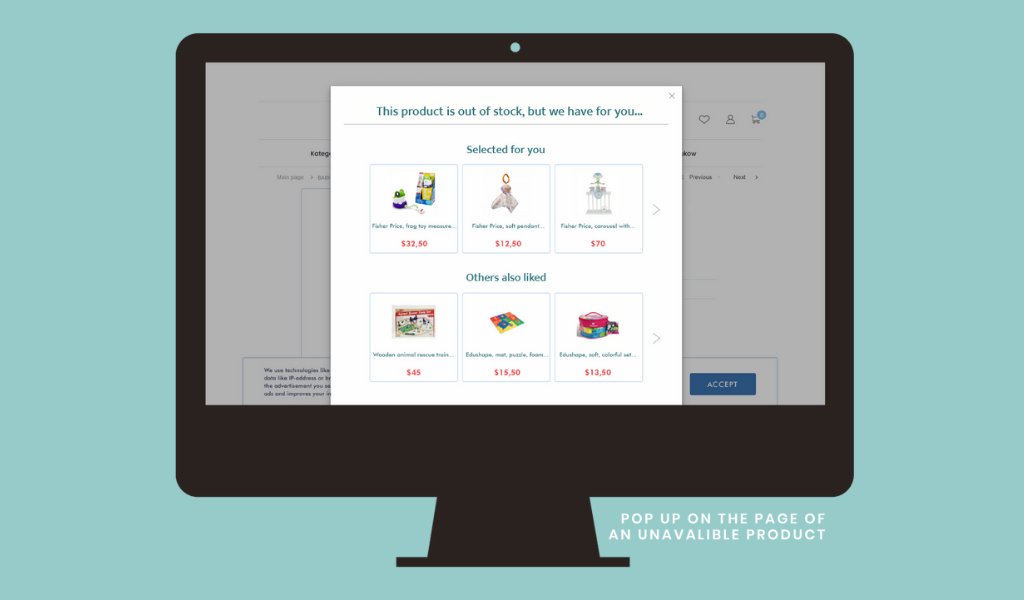
Thirdly, keep a consistent look of all subpages and recommendation tabs. An identical HTML structure is not only for the benefit of the user, but also to make data collecting easier for the AI powered recommendation engine, especially an automatic one.
Recostream is this type of recommendation system – it does not require website owners to manually collect and upload data into the system. Using it is therefore much more convenient than assembling all the components by hand.
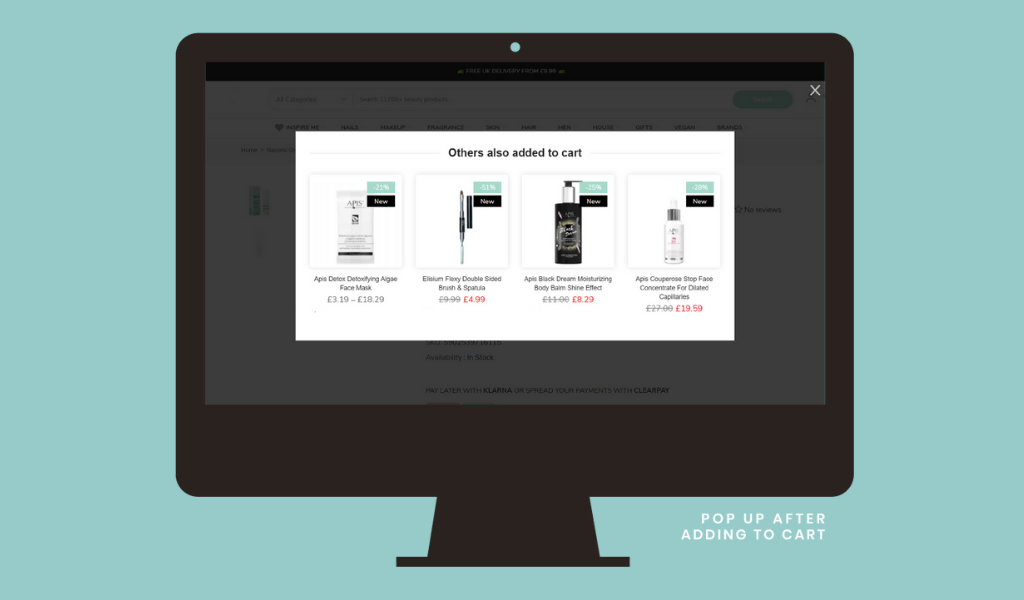
What also serves data collection in an automatic system like Recostream is filling in all the missing values in item information on the website. Whether it’s the name, description, tags, prices, etc., all input data is relevant.
Implementing and measuring recommendation systems
In order for the implementation of a recommender system to make sense, the contractor must first evaluate whether the scope of the website in question is sufficient.
Recommendation systems are a creative way to present the product offer of a store or the content of a platform. Should the item list be too narrow, introducing the system will not be worth your while. If the website is too small – the data will be scarce.
For Recostream, the implementation threshold is at least 100 products and 1000 product subpage views daily.
[Read also: Netflix Algorithm: How Netflix Uses AI to Improve Personalization]
How to implement recommendation engines?
The process of implementation depends on the recommendation system provider.
So how to build recommendation engine functionality into, let’s say, an online store page?
The contractor’s role is usually reduced to only a few steps.
Recostream’s procedure happens to be one of the easiest ones – the website owner has to simply add a line of code in the <head> section. This way the recommender script is downloaded and the implementation team can take care of the rest.

The system is ready to launch within 24-48 hours. After the activation, a team of professionals monitors the system for a period of time to check if everything is in order.
How to measure a recommender system?
This also depends on the given system. With Recostream, all data is available in Google Analytics. Tracking conversions there can be extremely easy and intuitive.

9 types of recommendation models + real examples from our implementations
There are quite a few types of product recommendations to choose from when setting up a system. They can be used in different locations on the website; the 9 described below are the most effective.
1. AI-Driven Maximized Conversion is a model returning optimized recommendations with high conversion probability. It requires collecting the first data range to launch, but it is extremely adaptable and increases customer engagement and AOV.

2. Most Viewed in Category generates recommendations based on the history of user sessions. It displays the most popular items in the category viewed by the user, which makes navigating the website much easier. This method requires some build-up of user session data, though.

3. Bestsellers in Category is a twin model of “Most Viewed”, but the necessary condition is most products sold in a particular category. The Amazon recommendation system uses this solution.

4. Most Similar in Category compares product info and recommends the ones most similar in the category viewed by the user. This model requires meticulous product characterization, but it’s extremely accurate and effective immediately after the launch.
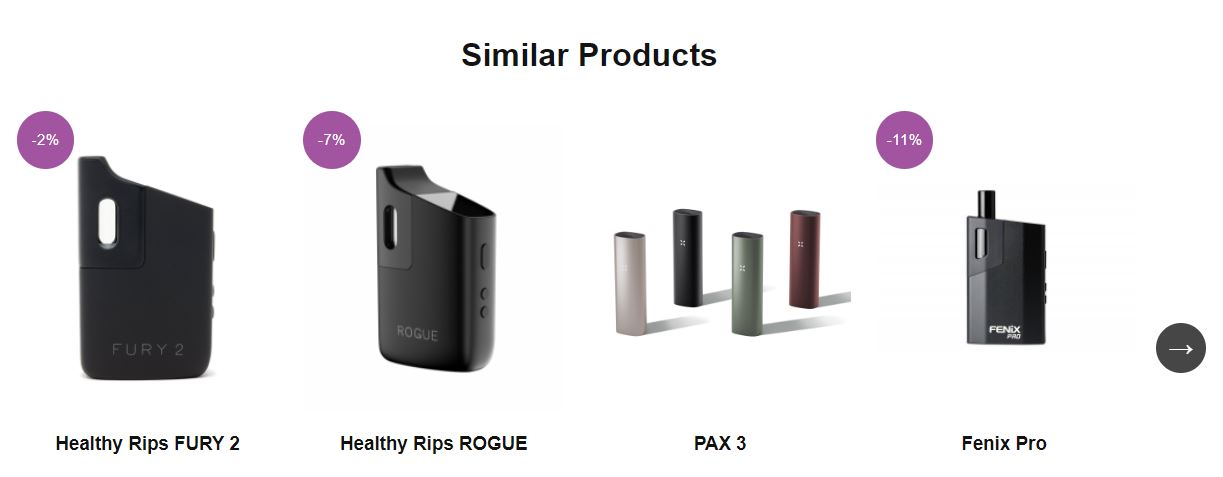
5. Filtered by Category is an equivalent of “Most Similar in Category” if the latter had the option to add specific filters. The former is a more narrow and feature-specific version.
6. Recently Visited in Store is available exclusively to returning users. The model is based on the session history of a particular user ID. Visitors get reminders (e.g. on an online store’s home page) of what they were previously interested in and this might convince them to finalize the transaction.

7. Bestsellers in Store differs from “Bestsellers in Category” in the scope of candidate generation – the items are picked page-wide.
8. Others Also Viewed in Store introduces cross-selling: the current customer is matched with other users based on what they view on the website. It’s based on the statistical analysis of viewing history.
9. Rule-Driven Recommendations are chosen by the website owner whenever a specific product needs to be promoted.
Each of the recommendation types above is unique and worth considering. It all depends on what the end goal of the website owner is.
Introduce personalized recommendations in your business today!
Empower Your Business With AI-Driven Recommendation Engine!
How can your business benefit from a recommender system?
Out of the many advantages of implementing recommendation systems, engaging the user is probably the most important one. Encouraging customers to stay on the website and consider a larger portion of the store’s offer is absolutely crucial for e-commerce.
The longer the users linger around, the more trust they have for the brand. This directly translates into more monthly visits, more new and returning customers and more conversions.
A well-designed recommendation system can help build your business – and through various methods of customization, you can choose the exact ways to achieve success.
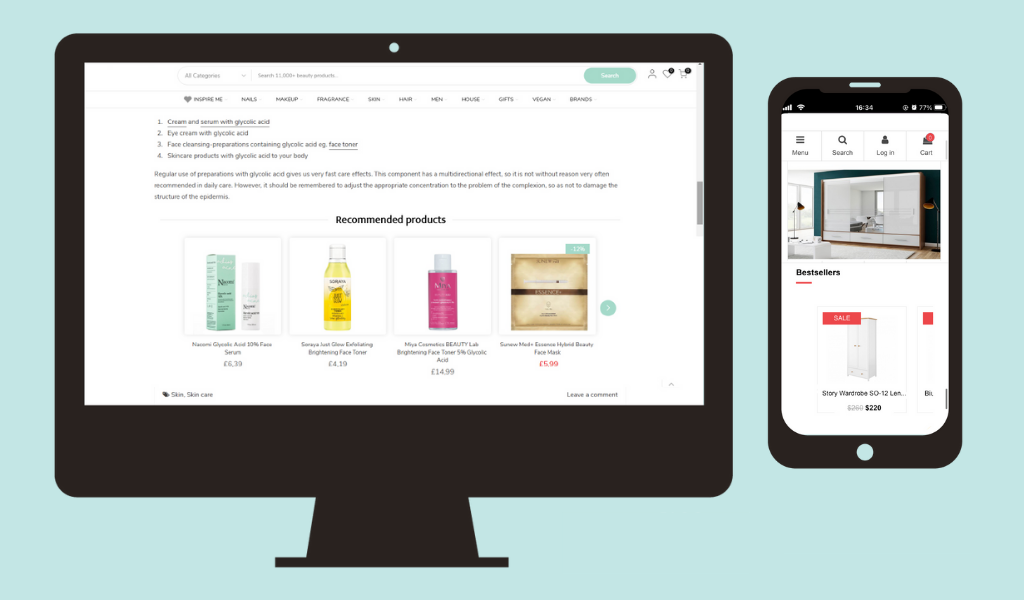
Key statistics on recommendation engine market in 2024
The latest statistics and forecasts on recommendation engines reveal a fast-growing market with significant investments and expected continued expansion:
- Market Growth (2021-2028): The global recommendation engine market was valued at $1.77 billion in 2020 and is expected to grow at a compound annual growth rate (CAGR) of 33.0% from 2021 to 2028. This growth is primarily driven by the increasing need to improve customer experience.
- Forecast 2023-2028: The market size is expected to grow from USD 5.17 billion in 2023 to USD 21.57 billion in 2028, at a CAGR of 33.06%. The growth can be attributed to the increasing number of enterprises and rising competition among them, which is driving the integration of technologies such as artificial intelligence.
- Long-term forecast (2021-2031): The market was valued at $2.7 billion in 2021 and is projected to reach $43.8 billion by 2031, growing at a CAGR of 32.1% from 2022 to 2031. This forecast demonstrates long-term confidence in the growth and expansion of recommendation engines.
- Ten-year forecast (2023-2033): The market size is estimated to grow from $4.16 billion in 2023 to $72.12 billion in 2033, at a CAGR of 33.0%. This forecast indicates a robust and sustained interest in the development and deployment of recommendation engines over the next decade.
- Market Size and CAGR (2022-2030): The market was valued at $4556.57 million in 2022 and is expected to reach $24785.3 million by 2030, at a CAGR of 32.62% over the period. This reflects strong, ongoing investment in recommendation technology, driven by its critical role in improving user experiences and business strategies.
Sources: Grand View Research, Mordor Intelligence, Recommendation Engine Market Research, Regional Research Reports, 2023-2030 Recommendation Engine Market Trends: Overview.
These forecasts reflect a market that is not only growing rapidly, but is expected to continue its significant expansion well into the next decade. The consistently high CAGR across the various forecasts indicates a robust confidence in the technology and its application in various industries.
Final words
Machine learning-based recommendation systems are complex structures of interconnected functionalities whose sole purpose is to generate recommendations tailored to the exact needs of website users.
Creators of an efficient recommendation system need excellent technical, mathematical and statistical skills and AI experience. Job one is to build a system able to collect and process huge volumes of information, job two – to figure out how to utilize it as wisely as data scientists.
Website owners need not worry, though – implementing a system like Recostream built by Stratoflow is easy and includes constant technical support, even long after the launch.
[Learn more how Stratoflow team has built a high-performance AI/ML recommendation engine in our case study.]
Related Posts
- How to Boost Your Sales with a Product Recommender Tool
- How to Build a Recommendation System: Explained Step by Step
- Types of Recommendation System For Business Growth: Your Guide
- Inside the Netflix Algorithm: AI Personalizing User Experience
- Music Recommendation System: How Do Streaming Platforms Use AI?
We are Stratoflow, a custom software development company. We firmly believe that software craftsmanship, collaboration and effective communication is key in delivering complex software projects. This allows us to build advanced high-performance Java applications capable of processing vast amounts of data in a short time. We also provide our clients with an option to outsource and hire Java developers to extend their teams with experienced professionals. As a result, our Java software development services contribute to our clients’ business growth. We specialize in travel software, ecommerce software, and fintech software and AI development. In addition, we are taking low-code to a new level with our Open-Source Low-Code Platform.

